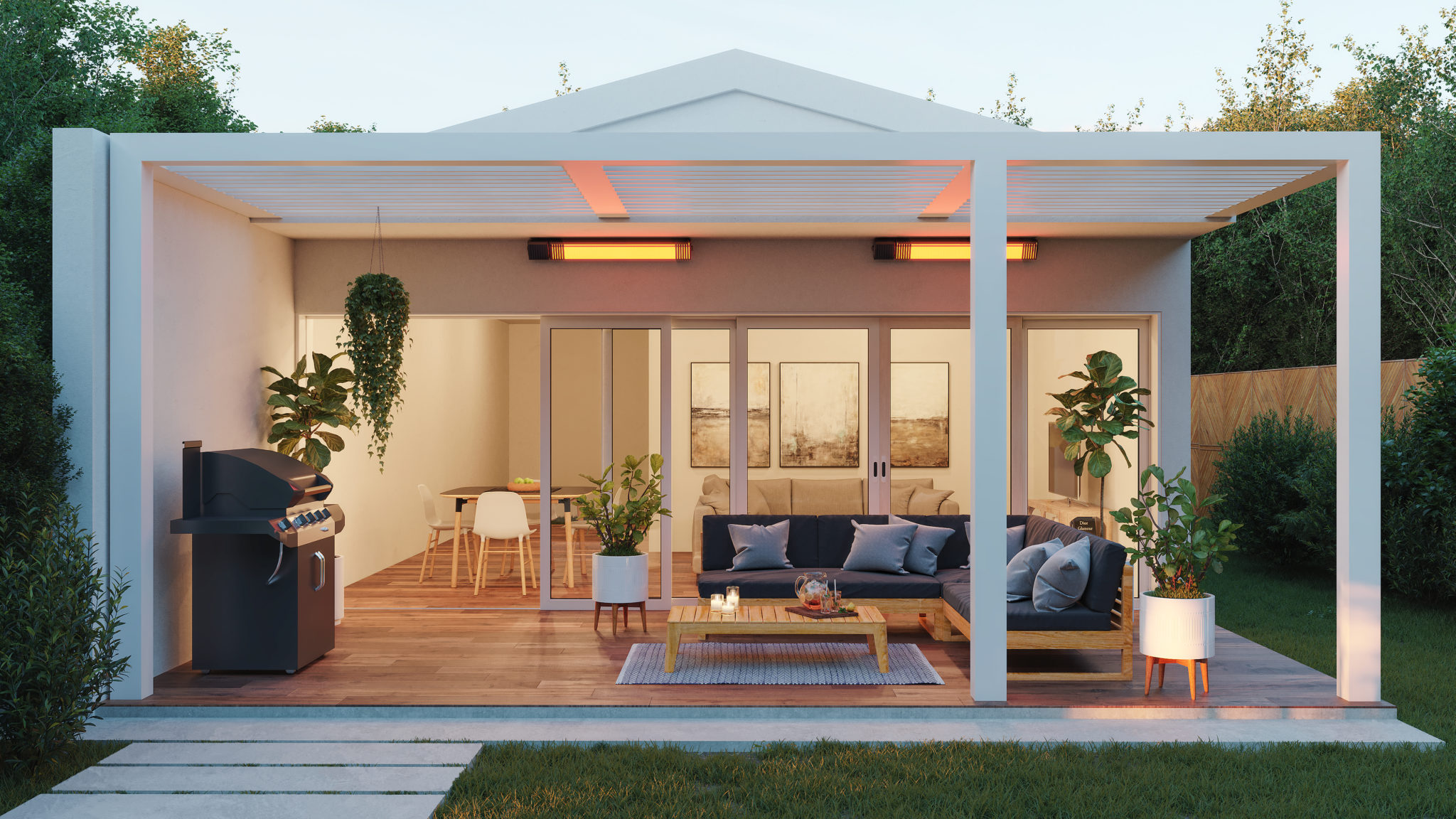Whether it’s a cosy fire pit to sit around on long summer evenings, or a high performance woodburner to heat up the outdoors in the colder months, a myriad of ways exist to bring an outdoor space to life.
The tantalising dance of open flames creates an allure on its own, but when surrounded by a well considered design object, the open fire becomes a key part of a successful landscape design. When fire isn’t the favoured heating method, certain outdoor heating options can offer a similarly engaging experience, with designer heating options crafted to deliver targeted warmth and ambient alfresco spaces.
As the temperature continues to drop, here’s some key points to consider when selecting alfresco heating this winter.
Can I use infrared heating in my home?
Infrared wall-mounted heating is a viable outdoor home heating solution, and this clever technology delivers more than meets the eye when it comes to performance.
Infrared outdoor heaters are at the forefront of heating innovation, and are commonly specified in commercial spaces – specifically retail and hospitality settings.
While infrared technology is still relatively new to residential settings in New Zealand, it is an optimal solution for heating the outdoors in particular. Infrared heaters only heat the objects and people in a space rather than the space itself, making for a highly efficient and desirable home heating solution.

What are the benefits of a built-in outdoor fireplace?
Built-in fireplaces often offer a sense of elegance and permanence in an outdoor area, and organically become the central focal point of the space. A key benefit of a built-in fireplace is the ability it delivers to transform a space, injecting character, tactility and texture and providing a compelling centrepiece around which to gather.
With the right choice of materials, style and functionality, a built-in outdoor fireplace will complement the architectural nuances of the building and extend the liveable area by creating a warm alfresco space for use year-round.
Built-in fireplaces and ovens generally include those structures which are defined as ‘permanent’, as well as certain freestanding fires and ovens. There are various regulations that cover their installation, including the requirement that they must be at least one metre from any combustible object such as trees, shrubs, buildings or wood storage piles – a key consideration when it comes to size, location and design of any outdoor fireplace or oven.
In some cases, consent is required for outdoor fires, including when a fireplace will be attached to an existing dwelling or shed, when the fire surface exceeds one square metre, or the fireplace will be located under an existing roofed sun-shelter.
While the rules for outdoor fires in New Zealand vary between regions, it’s always best practice to speak to a design professional who can advise you whether your project will need consent, or if it is exempt.
The contemporary built-in fireplace can often be customised to deliver multiple functions, including as a pizza oven, barbecue, smoker, rotisserie or grill as well, of course, as the basic beauty and allure of open flames.
In-built fireplaces are generally constructed from bricks, steel or stone, and many design possibilities exist. Perhaps its natural wood set against dark rolled steel, glowing pebbles complemented by concrete bricks, or the allure of natural flames combined with the elegance of schist, the design options are endless.

Why consider an outdoor fire pit?
An outdoor fire pit is perfect for casual household gatherings and cooking, the fire pit itself symbolic of a modern bonfire. It is a clever way to create a visually impactful focal point or stand-out design element in an outdoor area.
Ultimately, fire pits are a highly visual and interactive way to introduce heat and light into the outdoor living experience, in a more casual, occasional fashion than the permanence of a built-in fire or heating system. With the right accessories, fire pits can double as a cooker, grill, and pizza oven—making for memorable culinary experiences.


Can I build a DIY outdoor fireplace?
DIY outdoor fireplaces are often constructed using pre-made fireplace kits.
While a DIY fireplace kit is a way to potentially reduce outgoings, it may be that an architectural solution is the best option to make the most of the space, or to deliver bespoke materiality or functionality.
The owner of a self-built summer cabin on rural land north of Auckland cleverly crafted a fireplace out of two bags of Quikrete, a steel flue, and legs from a barbeque. This creative endeavour worked well; a testament to the creativity and skill of the homeowner.

What type of fuel can I use for my outdoor fire?
Fuel options for outdoor fires include biofuel, gas, or wood.Using wood is an organic way to introduce the natural element of fire into your outdoor area, while gas offers the benefit of controlled flame and heat output.
Biofuel is generally seen as a sustainable alternative to traditional energy supplies. It is generally manufactured from the byproducts of industries including dairy and horticultural farming, and is clean-burning, resulting in lower emissions.
Ultimately, an outdoor fire is a beautiful and functional way to invite warmth and light into the home, and there are many design-led solutions to capture the flames in a sculptural setting that adds flair to the space, both when in use and not.
Find out more about different types of fireplace design.




